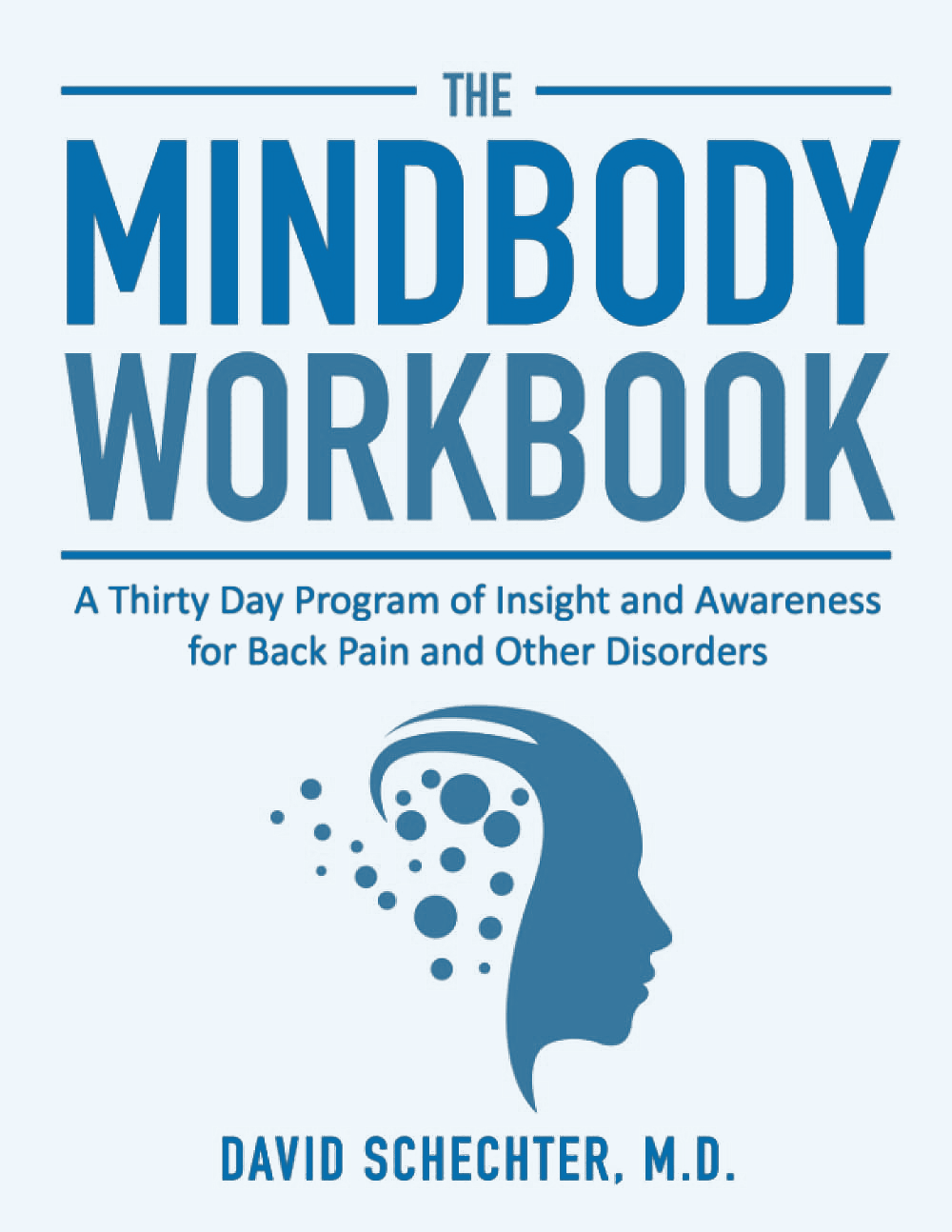“The Mindbody Workbook” by Dr. David Schechter

Dr. David Schechter’s “The Mindbody Workbook” provides you with a structured thirty-day journal aimed at identifying and expressing psychological issues that may contribute to various physical ailments, such as back pain, neck pain, fibromyalgia, irritable bowel syndrome, and tension headaches.
As a former student of Dr. John Sarno, Dr. Schechter designed this workbook to facilitate Dr. Sarno’s process of insight and awareness, enabling you to utilize the mind-body connection to your advantage.
Studies have demonstrated that keeping a journal is beneficial when you take action with the contents of your writings, rather than simply thinking about it
While journaling can be seen as challenging, it provides a powerful reward and can be utilized for future reference when dealing with other issues.
“The Mindbody Workbook” by Dr. David Schechter - Book contents
Introduction
My Background
Psychosomatic and MindBody Disorders
Supportive Research
Thirty Day Program
Day Zero
Week One
Week Two
Week Three
Week Four
Final Days
After the thirty days
Bibliography
Appendix One - Tension Myositis Syndrome (TMS) Basics
Appendix Two - Finding a MindBody Practitioner
“The Mindbody Workbook” by Dr. David Schechter - Book review
“The MindBody Workbook: A Thirty Day Program of Insight and Awareness for People with Back Pain and Other Disorders” by Dr. David Schechter is a comprehensive guide if you are seeking relief from chronic pain and other physical symptoms through mind-body techniques.
This workbook provides a step-by-step approach to healing by helping you identify and understand the emotional triggers that may be contributing to your physical pain.
“The MindBody Workbook” begins by introducing the concept of mind-body medicine and explaining how emotional stress can manifest in physical symptoms.
Dr. Schechter provides a clear and concise explanation of the mind-body connection and how it relates to chronic pain, citing research studies and case examples to illustrate his points.
Well-structured exercises
Subsequent chapters guide you through a series of exercises designed to help you identify your emotional triggers and learn how to release emotional stress.
The exercises are well-structured and easy to follow, with clear instructions and helpful examples.
Dr. Schechter uses a variety of techniques, including journaling, guided imagery, and relaxation exercises, to help readers connect with their emotions and release pent-up stress.
Importance of self-care
One of the strengths of “The Mindbody Workbook” is Dr. Schechter’s emphasis on the importance of self-care and self-compassion.
He encourages you to be gentle with yourself and to take time to nurture your physical and emotional wellbeing.
This emphasis on self-care is an important reminder that healing is a process that requires patience and self-love.
Real-life examples
Another strength of the book is the inclusion of case studies throughout the chapters.
These real-life examples illustrate how mind-body techniques can be effective in treating a variety of physical symptoms, from back pain to irritable bowel syndrome.
The case studies also help to illustrate the wide range of emotional issues that can contribute to physical pain, such as stress, anxiety, and depression.
Additional resources
In addition to the exercises and case studies, “The Mindbody Workbook” includes a wealth of resources for readers seeking further information and support.
Dr. Schechter provides recommended books and websites, as well as a directory of mind-body practitioners and clinics.
This comprehensive approach makes this workbook a valuable resource for anyone seeking to learn more about mind-body medicine and how it can be used to treat chronic pain and other physical symptoms.
Clear and concise
The writing style of “The Mindbody Workbook” is clear, concise, and accessible, making it easy to understand the concepts and exercises.
Dr. Schechter avoids using medical jargon and instead uses everyday language to explain the mind-body connection and how it relates to chronic pain and other physical symptoms.
Clear instructions are provided for each exercise, along with helpful examples and case studies to illustrate how the exercises can be applied in real-life situations.
Dr. Schechter’s writing style is also empathetic and compassionate, conveying a sense of understanding and support for anyone who may be struggling with chronic pain or other physical symptoms.
Key takeaways
Emotional stress can manifest as physical pain. By understanding the mind-body connection and how emotional stress can impact physical health, you can begin to identify and address the root causes of the symptoms.
This workbook provides practical exercises and techniques that you can use to reduce stress, release tension, and alleviate chronic pain. By practicing these techniques regularly, you can learn to manage your symptoms and improve your overall wellbeing.
Self-care and self-compassion are essential. By practicing self-care and self-compassion, you can develop a deeper sense of self-love and acceptance, which can be an important factor in the healing process.
Comprehensive understanding
“The Mindbody Workbook” provides you with a comprehensive understanding of the mind-body connection and practical tools for managing chronic pain and other physical symptoms.
By applying the techniques and insights presented in the book, readers can learn to take control of their physical and emotional health and experience a greater sense of wellbeing.
If you are struggling with chronic pain or other physical symptoms, “The Mindbody Workbook” is a valuable tool for your healing journey.